Huawei P30 Pro Review - Screen Review
Screen
P30 Pro screen
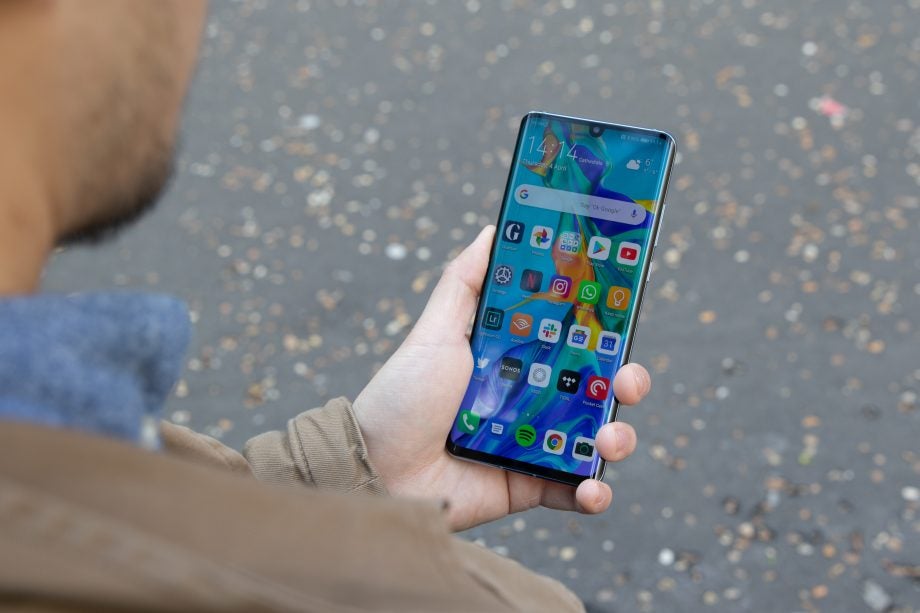
Sections
- Page 1 Huawei P30 Pro Review
- Page 2 Camera Review
- Page 3 Performance Review
- Page 4 Screen Review
- Page 5 Battery Life Review
What is the Huawei P30 Pro’s screen like?
- The screen here is good, even if visually it doesn’t look as good as an S10 or iPhone XS.
- It features a 6.4-inch OLED panel, with HDR support and a resolution of 1080 x 2340.
- It impresses in our colour gamut tests and is plenty bright enough.
Measuring 6.4 inches, the OLED display on the Huawei P30 Pro stretches nearly edge-to-edge and has curved edges similar to the Samsung Galaxy S10. It’s a bright panel with balanced colours and it reproduces content impressively.
There’s HDR support in apps such as Netflix and YouTube for boosting colours and providing better dynamic range; however, I found the HDR effect was far less noticeable than on the Galaxy S10.
My only real issue with the display is the sharpness. The FHD+ resolution is fine, but get up-close and you’ll be able to pick out individual pixels. This is especially obvious when scrolling through pictures and zooming in.
You can get a more detailed breakdown of how the Huawei P30 Pro’s screen performed in our standard suite of tests in the charts below.
Huawei P30 Pro display: Brightness
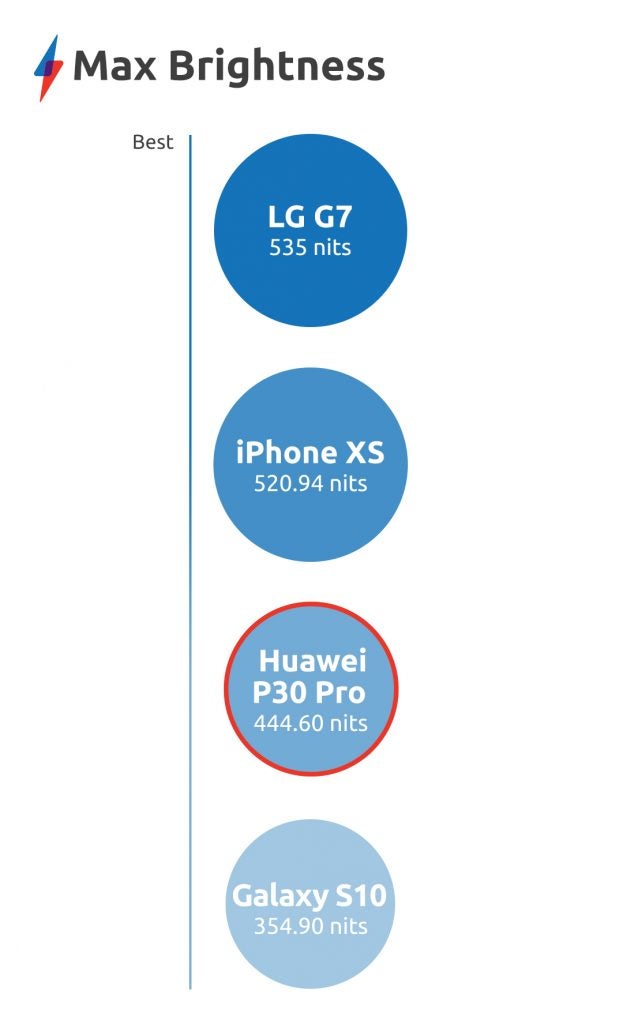
Brightness is in nits, which is a measure of intensity divided by area. Max brightness capped out at around 444.60 nits, offering enough oomph to help the phone remain visible in bright sunlight on the few occasions I felt the need to jack up the brightness to max.
A nit is a measurement of how much luminescence (light) comes off a screen. Most people will find around 150-200 nits comfortable to view in regular lighting – and on the P30 Pro this means keeping the phone at about 40%. I tended to opt for auto-brightness; this did a good job at keeping brightness at a constantly viewable level.
Related: What is HDR?
Huawei P30 Pro: Black levels
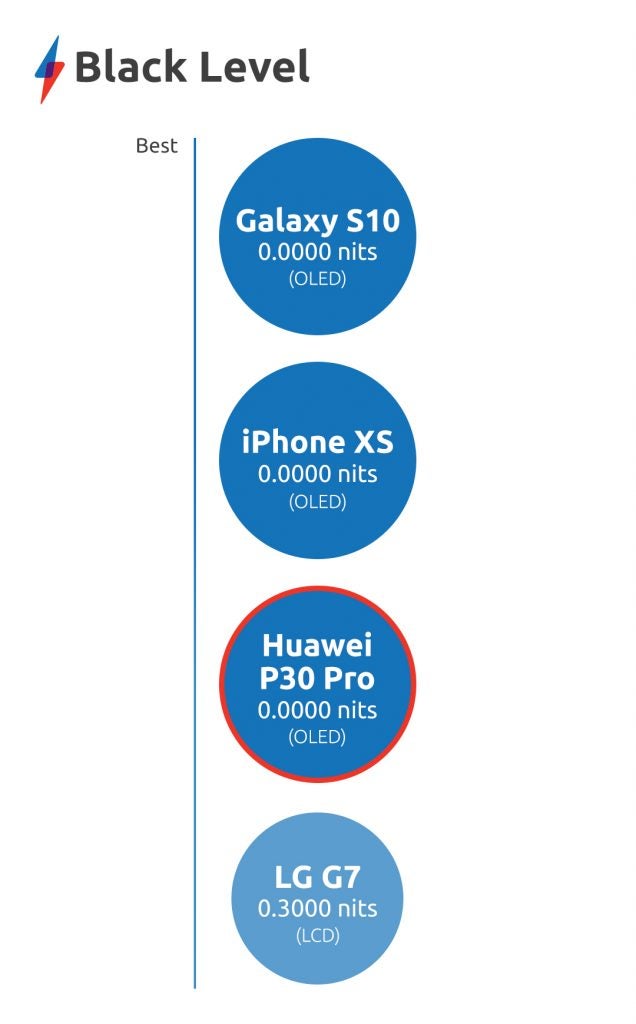
The use of OLED as opposed to LCD means the screen can offer perfect levels of black. This is the reason that you’ll find all the displays with an OLED panel scoring the same.
Huawei P30 Pro: Contrast ratio
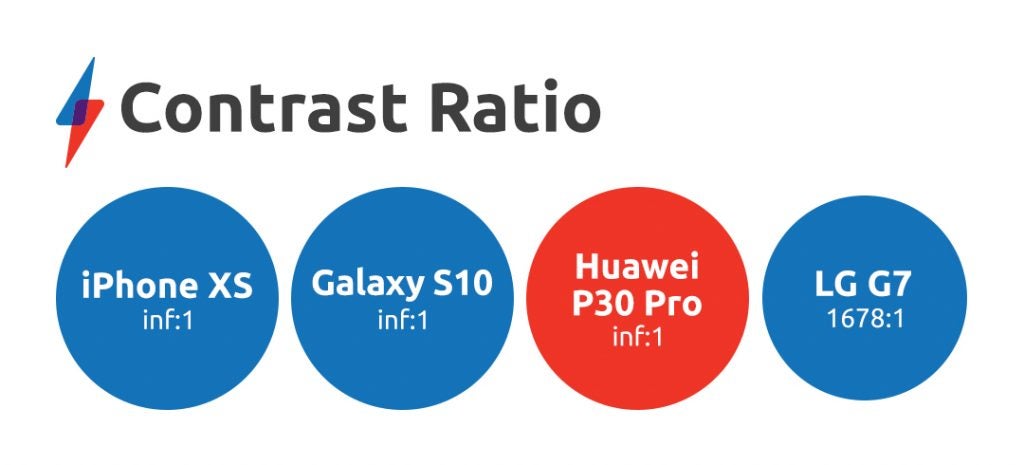
The Huawei P30 Pro – like the iPhone XS and Galaxy S10 – boasts an OLED display, and as such it has an infinite contrast ratio. Contrast ratio is a figure based on the white and black levels; it measures the distance between the darkest blacks and brightest whites.
Getting an accurate contrast ratio on AMOLED screens is impossible; the way they render 0.00 level blacks means readings will always come out as infinite, regardless of the max brightness.
Huawei P30 Pro: Colour accuracy
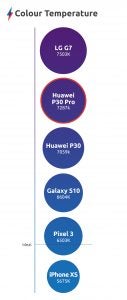
Colour temperature on the Huawei P30 Pro is close enough to the 6500k ideal to ensure whites don’t have that yellow-y tinge.
Colour gamut coverage is an area where phones are beginning to really impress, and the Huawei P30 Pro doesn’t disappoint. Colour gamuts are metrics used by artists and photographers. A higher coverage indicates the colours you see on-screen is what you’ll see once physically printed.
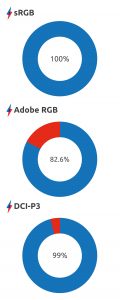
The bog-standard sRGB space is the one used day-to-day, and the easiest to cover. The 100% coverage is, of course, fantastic.
The Adobe RGB metric isn’t the most important due to its ageing nature, but it’s still favoured by many artists, photographers and designers that work in media. Here again, the P30 Pro’s 82.6% coverage shows how accurate this screen is.
DCI-P3 is the standard used by most cinemas and it has been increasingly targeted by mobile device manufacturers to hype up a quality display. The Huawei P30 Pro’s 99% coverage is excellent.


